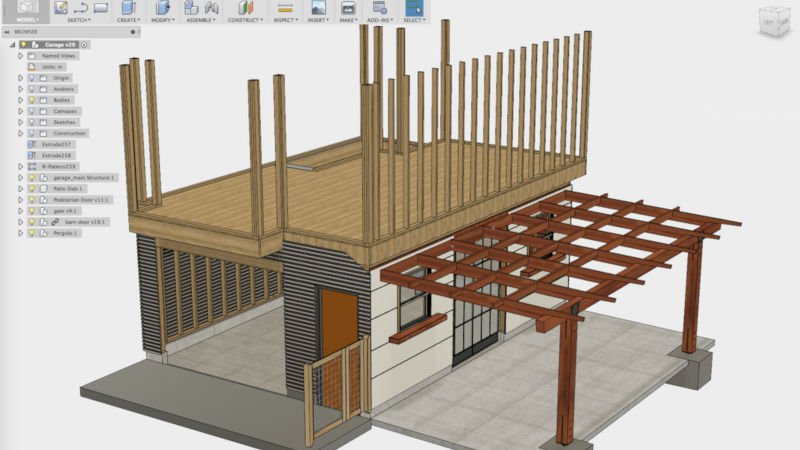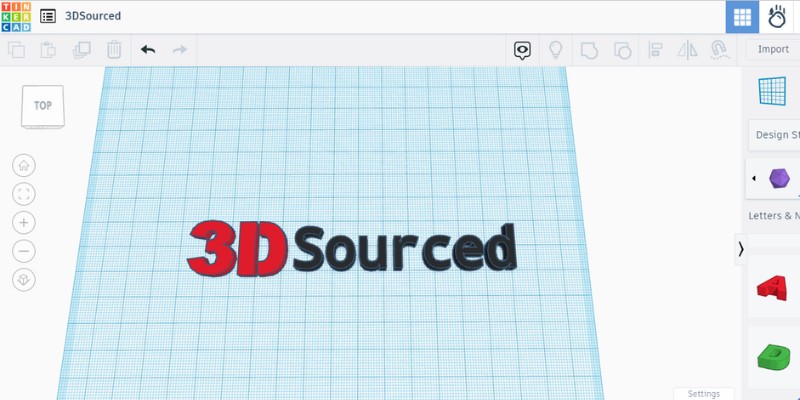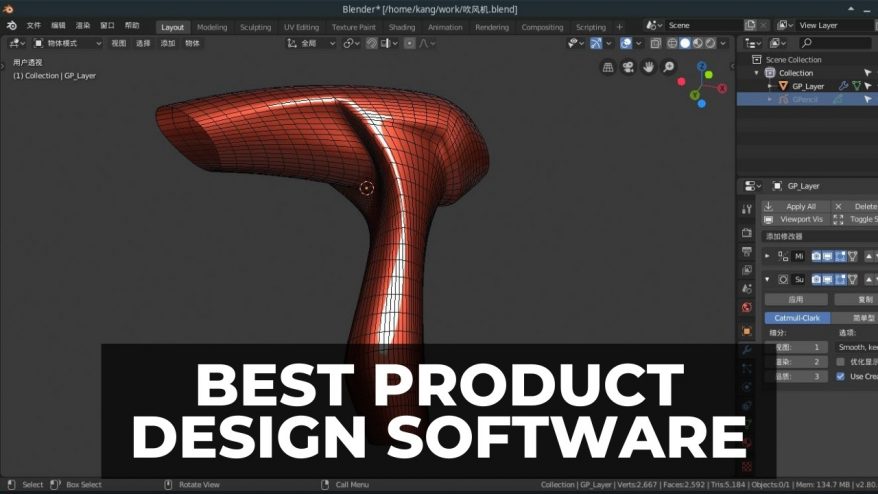Though the Ender 3 fully deserves its crown as the king of budget 3D printers, you’ll need the right software to harness its true printing potential.

The most important software you’ll need to get the most from your Ender 3 are:
- A slicer to convert your STL files into something printable
- CAD modeling software so you can design your own prints from scratch
- Printer-controlling tools for monitoring your device with greater detail
- Firmware to keep your printer running smoothly
This guide will bring you the best Ender 3 software I’ve found from my 2 – 3 years using the printer, guaranteed to improve your prints and enhance the performance of Creality’s flagship low-cost printer.
Best Ender 3 Software – Full Round-Up
Slicers
CAD Software
3D Printer Controller
Firmware
Ender 3 Software – Slicers
If there’s one 3D printing program you can’t do without, it’s a slicer. It allows you to transform raw model data into the movement and extrusion instructions needed for the Ender 3 to print a real-world, physical replica.
In other words, a slicer takes you from an STL to a G-Code file that the Ender 3 can interpret and use to create a print.
Here are our top picks for the options for the Ender 3, all of them free and accessible, whatever your current 3D printing experience level. For more, check out our full guide to the best Ender 3 slicers.
Cura

No slicer software boasts quite the same popularity as Ultimaker’s Cura.
Much of this is down to the software being free and open-source, but a rich array of features and an ordered, intuitive interface play a part in why many Ender 3 owners point to Cura as their slicer of choice.
Given that Cura offers pre-set profile and setting configurations for the Ender 3 and Pro, it provides the opportunity to print without any initial tinkering.
Beyond these, over 200 individual settings are laid out in easily scannable categories to fine-tune the Ender 3’s printing performance further.
Cura also pulls off the impressive feat of being suitable for beginners and advanced users alike.
How deep you delve into the intricacies of the slicing process is up to you, with an integrated marketplace at hand to bolster Cura’s toolset with additional features like custom supports or CAD integration should you need them.
Creality Slicer

A retooled and customized version of Cura, Creality Slicer is, to no one’s surprise, Creality’s in-house developed slicer.
The core appeal is that the Ender 3 comes with a microSD card loaded with Creality Slicer’s installation file, eliminating the need to hop on Google and download the requisite files to fire up the Ender 3 and print.
Furthermore, Creality Slicer is geared mainly for the manufacturer’s printer, with well-configured profiles for the Ender 3, Pro, V2, and the latest S1.
As these are tuned by the people most acquainted with the Ender 3’s quirks and intricacies, they tend to offer better results than pre-set configurations available for rival slicing software.
The big ‘but’ here is that Creality Slicer isn’t based on the most recent version of Cura and, therefore, is missing the most up-to-date features, like lightning infills and monotonic order settings.
The breadth of settings isn’t quite on par with Cura as a consequence, but Creality’s focus is on simplicity to not overwhelm first-timers, so the logic for this is sound.
The interface is more or less identical, though. The only noticeable difference is an ever-present Creality logo tagged onto the UI’s top left and a jazzed-up color scheme.
PrusaSlicer

Though initially designed as a fork of Slic3r for Prusa printers, the free and open-source PrusaSlicer teams up well with the Ender 3.
Unsurprisingly for a program associated with Prusa, it’s user-friendly thanks to a clean and uncluttered interface but also powerful, offering users a range of sophisticated slicing settings and tools.
PrusaSlicer comes preloaded with well-tuned profiles for the Ender 3 and Pro along with the V2 and S1, something Cura doesn’t do.
Far from ballpark default settings, the profiles rival Creality Slicer for just how well they dial in the Ender 3’s performance.
An ideal pick if talk of retraction speeds and infill densities leaves you baffled.
Prusa’s also includes an Ender 3 BL Touch profile, a nice touch for those who’ve made the upgrade, and over 150 auto-updating filament presets for the most popular brands out there.
Once you’ve nailed the jargon and have some printing experience under your belt, PrusaSlicer opens up to a wealth of customizable settings and tools. These include variable layer heights, an STL repair function, a paint-on seam tool, and in-depth print time analysis – to name a few.
Ender 3 Software – CAD Software
Have an exciting idea or concept you need to bring to life before sending it to the Ender 3 for printing? CAD software is a must-have, allowing you to model and design your very own objects and parts from scratch.
Fusion 360

A professional-grade CAD program for free? That’s precisely what Fusion 360 proposes if used for non-commercial, hobbyist ends or in an educational setting.
Developed by AutoDesk, the developer behind the industry-standard AutoCAD, Fusion 360 is a comprehensive and powerful modeling tool that doesn’t pull any punches when it comes to features and functionality.
If you can dream it up, Fusion 360 can bring it to life.
Having all this at your fingertips may stir up worries of it being too daunting, but Fusion 360’s layout and interface won’t overwhelm or confuse you.
Stacks of free tutorials and more YouTube videos than you’d ever need are at hand to help if anything isn’t clear.
Fusion 360 partners particularly well with the Ender 3 because it features a useful print simulation tool that will stress test the integrity of your model specifically for 3D printing.
It also bundles in slicer-like tools, like automatic orientation and support generation, to ease sending your part through a slicing program.
TinkerCAD

As easy on the eye as it is to model parts and objects for 3D printing, TinkerCAD is the beginner maker’s 3D modeling tool of choice.
It comes from the same developer behind Fusion 360 and AutoCAD, so it bundles in plenty of CAD pedigree and is a free, browser-based application to boot.
Inspired by the likes of Lego, TinkerCAD gives you access to a selection of basic solid geometric shapes that you can cut, combine, and sculpt into a 3D model, then add in text, holes, and color as required.
It’s elegant in its simplicity, and despite its child-friendly appeal, can create all manner of parts ready for 3D printing.
TinkerCAD has a free library of starter projects and easily digested tutorials to help you get started if you’re struggling for inspiration.
You can also export models as STL files, ready to send for slicing, then on to the Ender 3 for printing.
Ender 3 Software – 3D Printer Controller Application
If you want more Ender 3 control and monitoring options beyond what the fiddly rotary knob and cramped touchscreen offer, then you may want to consider a 3D printer controller application.
Octoprint

OctoPrint is an open-source, free, and browser-based interface for controlling and monitoring the Ender 3 and the printing process.
It’s an advanced tool, so it might be overwhelming for beginners. However, advanced users who want complete control over the Ender 3 shouldn’t sleep on the program.
From OctoPrint, you can:
- Remotely trigger/pause/stop prints from anywhere
- Monitor and check print progress without babysitting the machine
- Check on hot end and bed temperatures
- Tinker with parameters on the fly
- Visualize bed leveling
- Key in custom commands
- Capture print time-lapses
- and much more…
OctoPrint is compatible with virtually all consumer 3D printers, including the Ender 3 in all its guises.
Better yet as it relates to the Ender 3 family, OctoPrint allows you to update the machine’s firmware easily and quickly.
The OctoPrint plugin repository houses dozens of add-ons.
Nifty options include error detection that automatically sends an email if a print goes awry, integration with Google Drive to access STL and G-Code files remotely and quickly, and a print scheduler to fire off a print at a specified time.
We’re scratching the surface here as there’s plenty more to fine-tune your Ender 3 workflow and printing experience.
Firmware
Although not technically software, firmware is an integral part of the Ender 3 ecosystem.
Freshening up your firmware regularly not only grants access to the latest version and the latest features but can be a potent way to squash any bugs or issues your Ender 3 may be coughing up.
Note that upgrading the Ender 3 and Pro’s firmware requires flashing the mainboard with a bootloader via a microcontroller like an Arduino UNO before uploading the new version.
It sounds more intimidating than it is, so don’t be put off.
As for Ender 3 V2 and Ender 3 S1, which both ship with a bootloader, upgrading the firmware is done via microSD card; easy and straightforward.
Official Creality Firmware

If you’re looking for an easy way to upgrade your Ender 3 firmware and guarantee stability, the Official Creality Ender 3 firmware is likely your best bet.
It comes with an official stamp of approval for Creality and is tuned perfectly for the Ender 3, removing the need to dive into the code to mold it to suit your printer.
Creality offers a version for every Ender 3 under the sun, including the 8-bit and 32-bit variants, even bespoke versions for specific upgrades, such as a BLTouch bed leveling probe and a filament runout sensor.
If you’ve snapped up an original Ender 3 with older firmware, upgrading to the Official Creality Ender 3 firmware automatically adds thermal runaway protection to the printer.
It’s a vital safety upgrade that doesn’t require any hardware add-ons.
TH3D Unified Firmware

Another solid and accessible firmware for the Ender 3 is TH3D’s Unified Firmware.
It takes the most recent stable version of Marlin 2.0 and adds a few unique features to improve the Ender 3’s basic firmware.
TH3D puts the firmware through a strenuous stability testing regime to ensure a bug-free experience.
Pre-configured versions of TH3D Unified Firmware for the Ender 3 in all its incarnations are also available, all designed to work without the need to alter the underlying code.
As for the extra features TH3D offers, these include PID autotuning, preheating for specific filaments, assisted bed leveling, and support for different Ender 3 upgrades such as E3D V6 hot ends.
TH3D Unified Firmware rivals the official Creality Ender 3 firmware for ease of use, with a real focus on removing the more daunting aspects of firmware.
It offers even green beginners a seamless route to a better-performing Creality printer.
Ender 3 Software – FAQs
What software does the Ender 3 use?
The Ender 3 is an open-source printer, meaning broad compatibility with various software from slicers and CAD software to third-party print control and monitoring tools.
The printer comes with Creality Slicer as standard, the Ender 3 manufacturer’s in-house tuned slicing software.
However, the Ender 3 is equally well paired with Cura, PrusaSlicer, and other third-party open-source slicing software.
What software to use with the Ender 3?
We recommend using the Cura slicer with the Ender 3.
It’s easy to use, responsive, and offers access to a massive range of settings to get the most out of the Ender 3, Pro, V2, and S1.
Beyond a slicer, you may want to try your hand at 3D modeling, in which case TinkerCAD and Fusion360 are solid options. The Ender 3 also works well with OctoPrint, an open-source remote control and monitoring application for 3D printers.
Does Ender 3 have its own software?
Yes, the Ender 3 comes with its own slicing software, Creality Slicer. However, it is an open-source printer, and there are other third-party slicing software options available that work well with it.
Is Ultimaker Cura free?
Yes, Ultimaker Cura is a free and open-source slicing software.
Is Creality slicer free?
Yes, Creality Slicer is free and comes with the Ender 3 as standard.
What software to control Ender 3 from PC?
OctoPrint is a popular open-source software that can be used to remotely control and monitor the Ender 3 from a PC. Other options include Repetier-Host and Pronterface.
Other related articles we recommend:
- Ender 3 vs Ender 5
- Ender 5 vs Ender 5 Pro vs Ender 5 Plus
- Creality Ender 3 Dual Extruder
- Ender 3 Laser Engraver
- Ender 3 Alternatives
- How to Install/Update Jyers Firmware on Ender 3 V2

















